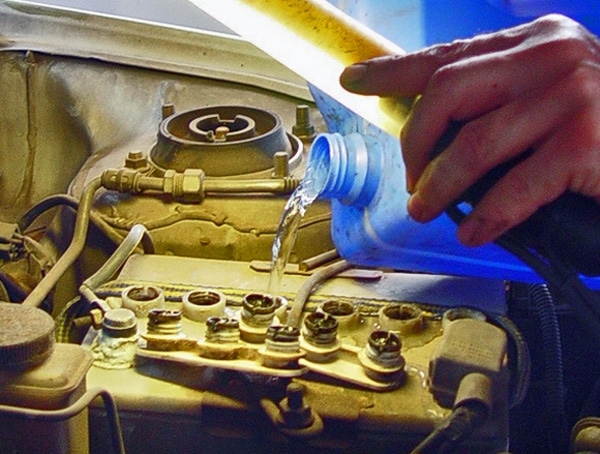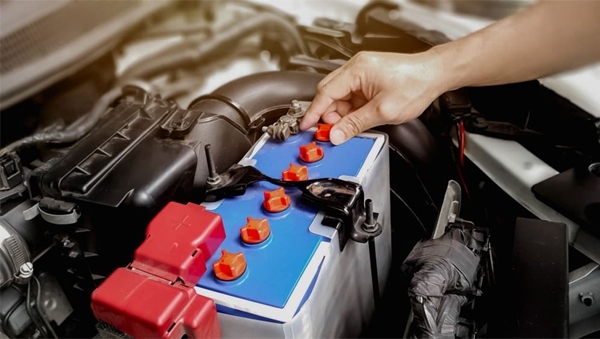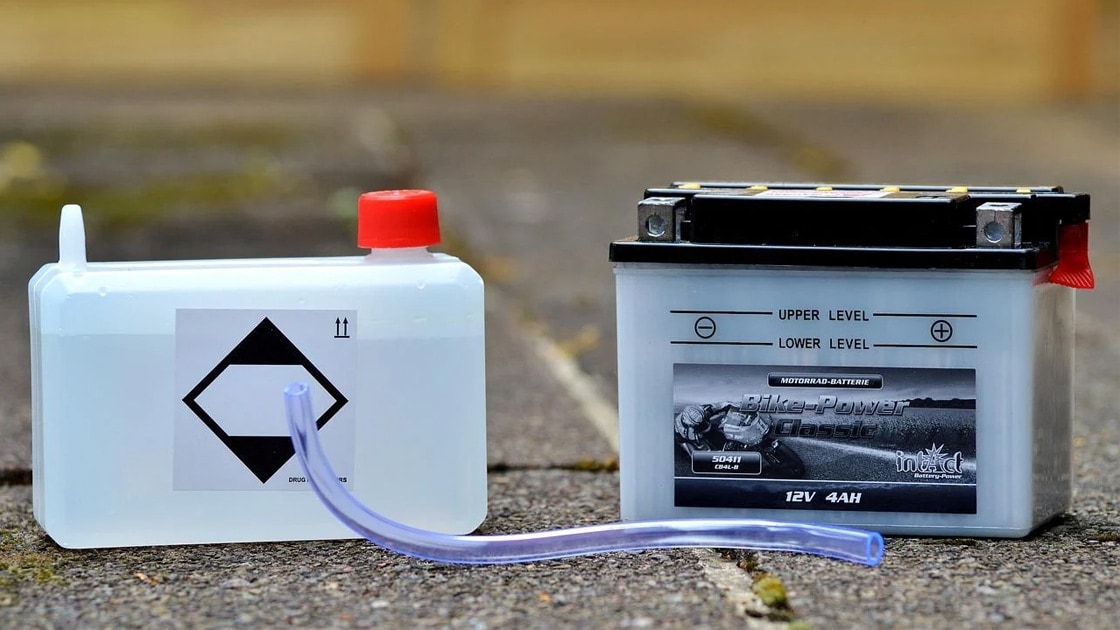Most cars today have maintenance-free batteries. However, some car models currently still use lead-acid batteries, a type of battery in which liquid is an important and indispensable part.
With this type of battery, you need to form a watering and maintenance routine to keep your lead batteries operating at peak performance and lasting longevity.
Fortunately, maintaining this routine is not too difficult because the operations are extremely simple. If you are still wondering about: ‘How to add water to a car battery?’, do not miss any information that will appear shortly.
How To Add Water To A Car Battery?

Add water to a car battery
Adding water to the car battery is not as difficult as you can imagine. Here are the detailed guides you need to follow for a successful maintenance procedure (Step by step to follow):
- Step 1: First, you need to prepare all the safety equipment. Then, before you start adding liquid, you need to disconnect the batteries and clean up the dirt around the terminals.
- Step 2: You also need to check your current liquid level to determine how many solutions you need to add. It would help make sure the battery terminals were completely coverable in the electrolyte solution.
- Step 3: After determining the amount of solution to be added, you can pour clean liquid to cover the lead plates.
If you use old batteries, you should not substitute them with liquid to the maximum extent to prevent further corrosion of the lead plate.
- Step 4: Finally, don’t forget to clean up the spills. After 1-2 days of adding water, you should regularly check to detect overflow or dehydration early.
How Does Car Battery Water Work?
The liquid used to soak the flat lead plates of batteries is an electrolyte solution consisting of liquid and sulfuric acid batteries.
When charging batteries, current flows through the aqueous portion of the electrolyte, causing the electrolyte to heat up. Heat will cause liquid to decompose into hydrogen and oxygen. These gasses will escape via the vent.
Meanwhile, the sulfuric acid part in the electrolyte solution causes a chemical reaction with the lead plate. With this reaction, the electrons will not stop moving and generating electricity.
Related:
- How Long Do Car Batteries Last? When Should You Replace Them?
- Why Does My Car Battery Keep Dying? 6 Main Reasons & Expert’s Guide
- Can A Car Battery Die While Driving? 7 Causes And Signs
- How To Disconnect, Replace Car Battery & Install A Car Battery
How To Check For Water Level?

Check for liquid level
So, how to maintain your lead-acid battery? As you have seen, in the process above, the step of checking the level plays an important role.
There are two main causes of electrolyte depletion. First, like any other liquid, this solution has a natural ability to evaporate. A small amount of electrolyte solution can be converted into hydrogen and oxygen during battery charging.
After a while, the electrolyte solution decreased significantly under the influence of the above two causes. And for timely replenishment, you first need to assess the liquid level in each cell.
After completing the steps such as cleaning, and disconnecting the batteries, look down from the port. Here, the fluid will envelop each cell.
Each cell should have the same amount of fluid. Specifically, the most suitable liquid level is usually within 1/2 inch on top of the plates or about 1/8 inch below the bottom of the intake manifolds.
If the amount of liquid is uneven, it’s time for you to fix it by filling the missing cell while keeping the cell with the standard amount of liquid.
The cause of the inhomogeneity of the fluid surrounding the cell may be an error in the liquid addition step a few times before, or liquid loss cannot be ruled out. If you suspect that your device has this problem, quickly check and replace the battery in time.
Common Issues To Avoid

Common issues to avoid
Checking the fluid level before performing maintenance will save you from many related problems, such as making the car run poorly and not exploiting the maximum capacity.
However, every operation plays an important role, not just a simple check. Any mistake can cause results that do not meet your expectations.
Here are some results that you need to avoid.
Underwatering
When you do not add the solution in time, the electrolyte drops to the lowest level. In this case, the batteries have fallen into a shortage.
If this phenomenon persists, the lead plate will be in constant contact with oxygen and hydrogen, thereby causing sulphation – with serious consequences.
Fortunately, you can avoid all of these dire consequences with just a few notes and a little effort. Specifically, here are some rules you need to master:
When preparing to add liquid, make sure not to use tap liquid. Instead, craft clean or tested, deionized water.
Taking care of the batteries is also one of the effective ways to limit the lack by simply adjusting the appropriate charging frequency, filling the battery naturally, and not overcharging the battery.
Combined with that is learning about the specifications and instructions from the manufacturer, you are sure to say goodbye to the phenomenon of shortage.
Overwatering
As the name suggests, excess liquid is a term that refers to the fact that you add too much solution, causing an excess of electrolyte solution for the battery cell.
This redundancy can lead to many problems. First, too much in the electrolyte can cause the battery not to have enough electricity to function. Besides, the excess solution can cause battery acid to spill out when charging.
To avoid the above situation, you should determine the battery’s charge level before starting maintenance. Thanks to the relevant parameters, you can more accurately estimate the life and the amount of fluid required by the storm.
FAQs
What happens if a battery runs out of water?
As mentioned initially, the liquid in the electrolyte will change into oxygen and hydrogen. If the water runs out, the lead plates can only come into contact with the existing oxygen and hydrogen gas.
This exposure leads to quite a few problems. In particular, the most serious is that the lead plates will radiate heat with the battery terminals, further causing evaporation and limiting the battery’s performance.
Can I put bottled water in my battery?
Bottled water is pretty good for refilling batteries. Unlike tap water which has too many minerals and even impurities that can corrode the battery, the bottled liquid is pure and safer for the storm.
Can I make distilled water?
You can completely distill yourself by heating the tap to evaporation.
After meeting the ice, the steam will condense back into distilled water, while the mineral residue will stay in the kettle.
Conclusion
As we know, the lead-acid battery requires regular care and maintenance. To keep your engine running at optimal performance, and avoid any unnecessary damage, watering a lead-acid battery is one of the habits worth maintaining.
How to add water to the battery? Hopefully, the article has provided you with a complete answer. From there, you can find the right time to add water and know how to handle possible issues.
WHAT'S NEW
The best AGM battery chargers will be the ideal option to revive your flat battery without relying on professional help. These handy high-tech chargers are extremely beneficial because they offer...
The Genius Boost GB40 is popular because of its ability to help boost your vehicle when it has battery issues. Many of our customers wonder why the Noco GB40 can work greatly like so. So, we have...

